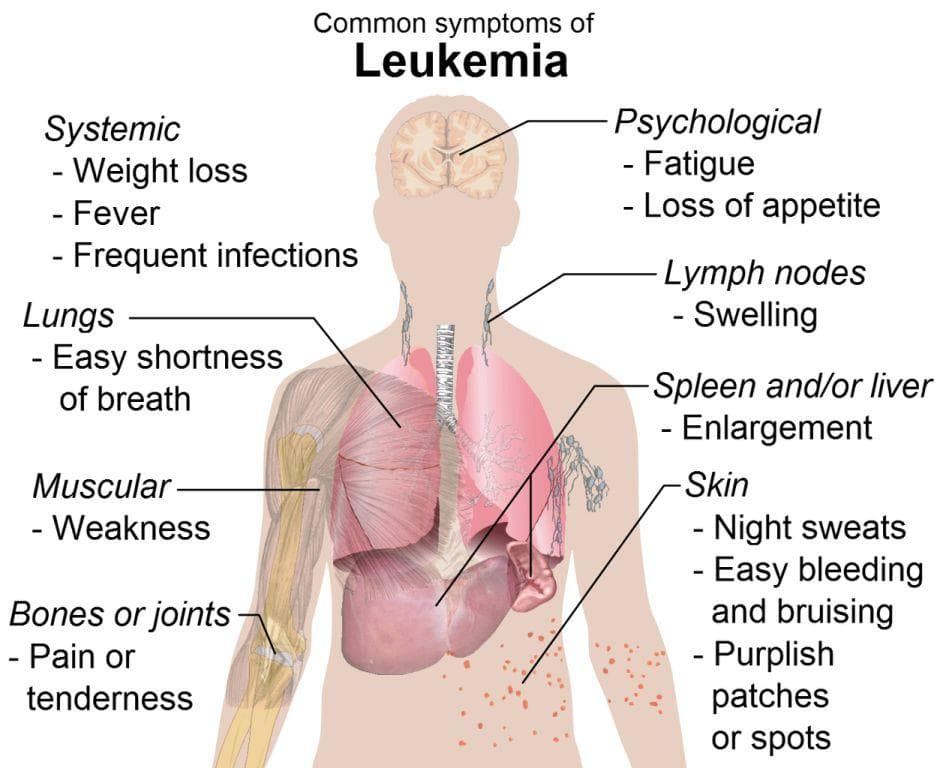A Complete Guide to Leukemia: Causes, Types, Symptoms, and Treatment Options
This comprehensive guide delves into leukemia's causes, types, symptoms, and treatment options. It highlights the differences between acute and chronic forms, discusses risk factors, and emphasizes the importance of early detection and personalized treatment strategies. Whether you're a patient, caregiver, or healthcare professional, understanding leukemia is essential for managing this complex disease and improving outcomes through timely intervention and advanced therapies.

Comprehensive Overview of Leukemia: Causes, Types, Symptoms, and Treatment Strategies
Leukemia, a complex blood cancer, accounts for a significant portion of cancer diagnoses worldwide, including over 60,000 new cases annually in the United States alone. According to data from the American Cancer Society (ACS), an estimated 60,300 individuals are diagnosed with leukemia each year in the U.S., with approximately 24,370 fatalities resulting from this disease. Leukemia originates in the body's blood-forming tissues, primarily within the bone marrow, and involves the uncontrolled proliferation of abnormal blood stem cells. These defective cells interfere with normal blood cell production, disrupting the body's ability to carry oxygen, fight infections, and control bleeding.
The disease develops from various types of blood stem cells, which are classified into myeloid and lymphoid lineages. Myeloid stem cells give rise to cells such as granulocytes, monocytes, and platelets, which are essential for immune response and blood clotting. Lymphoid stem cells develop into lymphocytes, including B cells, T cells, and natural killer (NK) cells, all critical components of the immune system. When these stem cells mutate and become abnormal blast cells, they multiply rapidly, crowding out healthy cells and leading to the symptoms associated with leukemia.
Classification of Leukemia: Types and Characteristics
Leukemia is broadly categorized into four primary types based on the origin of the abnormal cells—whether they develop from lymphoid or myeloid stem cells. These classifications include lymphoblastic (lymphoid) or myelogenous (myeloid) leukemia. Each type exhibits unique features, progression patterns, and treatment approaches, requiring tailored management strategies.
1. Acute Lymphoblastic Leukemia (ALL)
The American Cancer Society estimates that approximately 5,960 new cases of ALL are diagnosed in the U.S. each year, leading to around 1,470 deaths annually. ALL predominantly affects young children, particularly those under the age of five, with boys being more susceptible than girls. It is a rapidly progressing disease characterized by the accumulation of immature lymphoid blast cells in the bone marrow and peripheral blood. These abnormal cells hinder normal blood cell production, resulting in symptoms such as anemia, infections, bleeding, and fatigue.
Despite its aggressive nature, children with ALL often respond well to intensive treatment protocols that include chemotherapy, radiation therapy, stem cell transplants, and immunotherapy. The prognosis for pediatric patients has improved significantly over recent decades, with remission rates exceeding 90% in some cases. However, in adults, especially those over 40, the disease is less responsive, and prognosis becomes more guarded, necessitating different therapeutic approaches.
2. Chronic Lymphocytic Leukemia (CLL)
CLL primarily affects older adults, with the average age at diagnosis around 70 years. It progresses slowly and can remain asymptomatic for many years, often being discovered incidentally during routine blood tests. If untreated, CLL can advance and cause complications such as organ infiltration, including the liver and spleen. Symptoms may include swollen lymph nodes, fatigue, night sweats, and unintended weight loss.
The disease management involves various options, including watchful waiting for asymptomatic patients, and treatments such as chemotherapy, targeted oral therapies, radiation, stem cell transplants, and immunotherapies for more advanced cases. Although CLL is rare in individuals under 40, it accounts for a significant number of leukemia cases among the elderly, with roughly 20,940 new diagnoses and over 4,510 deaths each year in the U.S.
3. Acute Myeloid Leukemia (AML)
AML is considered the most common acute leukemia in adults and is marked by rapid progression. Annually, about 19,520 new cases are diagnosed in the U.S., resulting in approximately 10,670 deaths. The median age at diagnosis is around 68 years, and the disease tends to be more aggressive in older patients. AML involves the quick accumulation of malignant myeloid blast cells in the bone marrow, leading to bone pain, anemia, infections, and bleeding.
Fortunately, AML can often be managed effectively through intensive chemotherapy, targeted drug therapies, radiation, and stem cell transplants. Younger patients, particularly those under 60, exhibit a remission rate of approximately 70-80% and a five-year survival rate of around 26%. Early diagnosis and prompt treatment significantly improve outcomes in AML cases.
4. Chronic Myeloid Leukemia (CML)
CML affects about 8,430 Americans each year, with roughly 1,090 related deaths. It mainly impacts older adults, typically diagnosed around the age of 65 and above. The disease develops from a specific genetic mutation involving the Philadelphia chromosome, which causes abnormal growth of myeloid cells in the blood. Symptoms may include fatigue, weight loss, abdominal fullness due to an enlarged spleen, and anemia.
The hallmark of CML is its slow progression through different phases, initially presenting as a chronic phase that can be managed effectively. Standard treatments include targeted oral chemotherapy with tyrosine kinase inhibitors, radiation therapy, stem cell transplants, and immune system modulation. Although CML can transform into a more aggressive blast phase if untreated, the advent of targeted therapy has greatly improved prognosis and survival rates.
In summary, leukemia encompasses a diverse group of blood cancers with varying causes, progression patterns, and treatment options. Advances in medical research have improved survival rates and quality of life for many patients, but early detection remains crucial. Patients diagnosed with leukemia benefit significantly from personalized treatment regimens tailored to their specific type and disease stage. Awareness of risk factors and early symptoms can facilitate prompt diagnosis and more effective management of this complex disease.





